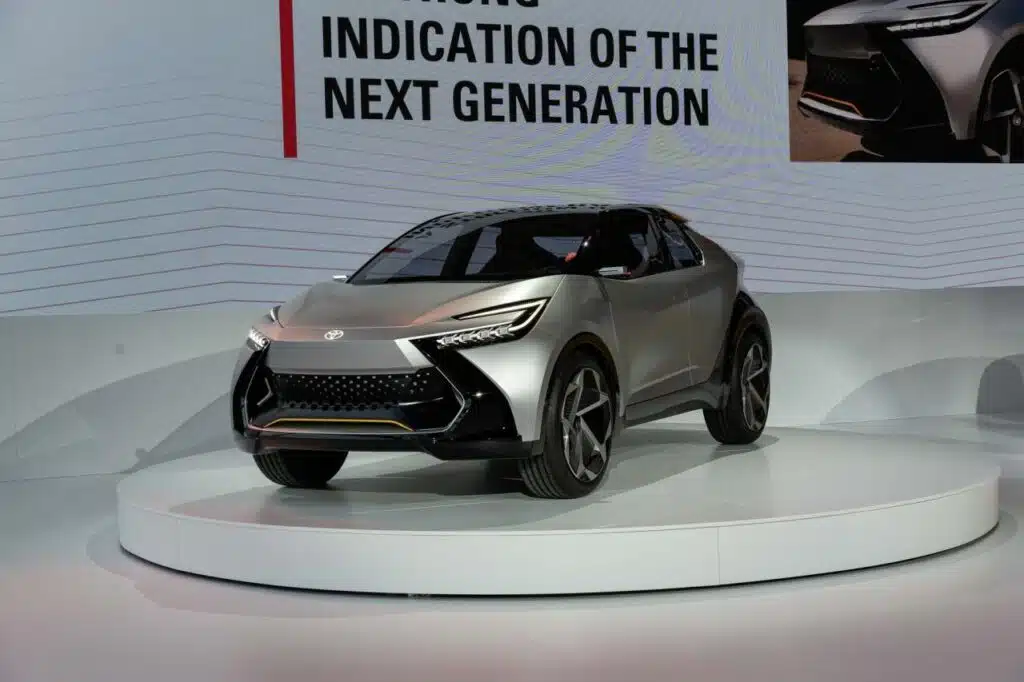Toyota CH-R Prologue: Toyota continues to focus on the hybrid drive
Once again, Toyota surprises the automotive world.
The compact crossover CH-R gets a successor including a plug-in hybrid drive. Everything was clear. The Toyota bZ4X is the all-electric successor to the CH-R and the RAV 4 has just received a model update. So there is no more room for the CH-R in the Asian carmaker's range. Especially since the electric car also adds to the letter combination.
But once again, the Japanese are not playing along with this classic product portfolio arithmetic. Because there will be a CH-R successor. And if that's not enough, the new model will also get a plug-in hybrid powertrain.
But one thing at a time. Let's look at the looks first. "Our mission was to dig deep and go further than we ever have before," says Toyota designer Lance Scott. The design language is a result of this endeavour. The compact crossover with its many edges and beads has a very futuristic appearance and is reminiscent of a vehicle from a science fiction film. It remains to be seen how European drivers will react to this expressive appearance.
The study of the compact crossover is very close to the series and therefore the efforts of Toyota designers to give their products a uniform appearance in the future are obvious. The face with the pointed front silhouette, which is modelled on a hammerhead, and the V-hook daytime running lights can also be found on the bZ Compact SUV Concept and the next Prius, with which this CH-R shares technology.
So the crossover also stands on the compact version of Toyota's New Global Architecture (TNGA-C), where the engineers have reduced weight and increased rigidity. As usual, the Japanese are still keeping a very tight lid on technology. Nevertheless, it is worth opening the bonnet of the Prius to discover the secrets of the next CH-R.
The PHEV module of the CH-R also consists of the 2.0-litre petrol engine with presumably 111 kW / 148 hp and a transaxle electric motor on the front axle, which is expected to produce 120 kW/160 hp. This interplay of old and new drive systems results in a system output that is likely to be in the Prius range of 164 kW / 223 hp.
The parallels continue with the batteries. The CH-R, which will presumably appear around the turn of the year 2023/24, gets the "large" battery with a capacity of 13.6 kWh. Due to the presumably somewhat larger Cw value and the higher weight compared to the Prius, CH-R might not quite reach the purely electric 80-kilometres of the Nippon Golf. But even so, the electric range should be decent.
